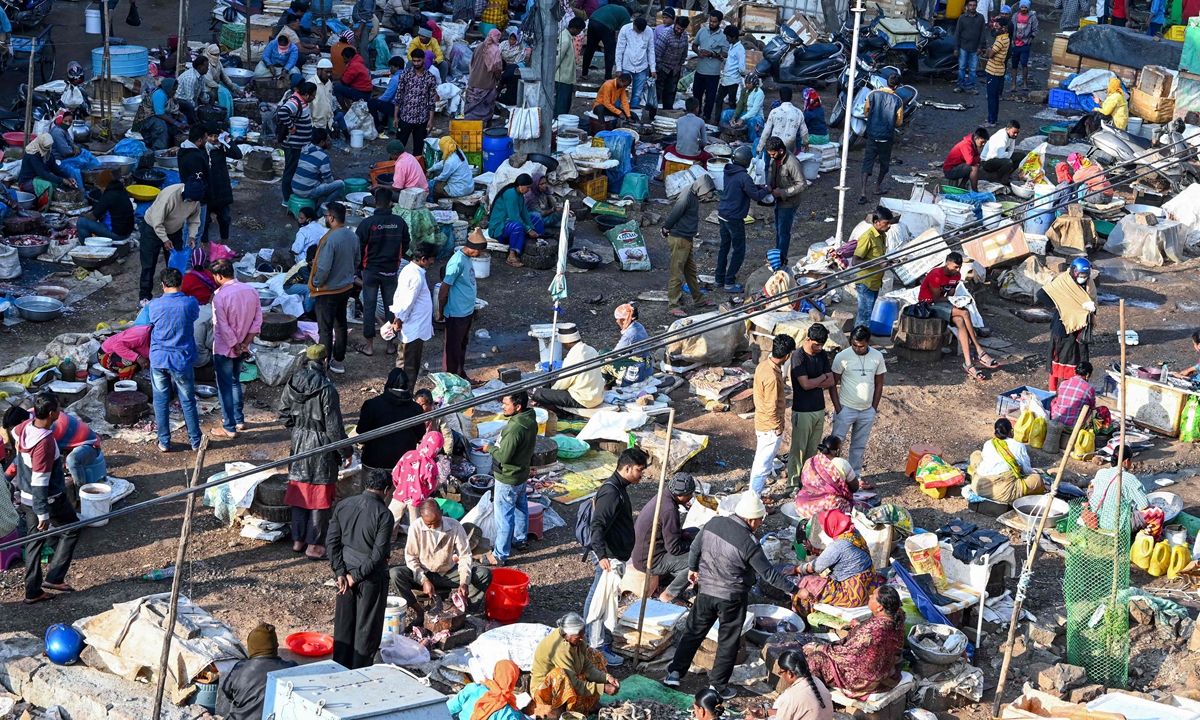
People buy fish at a wholesale fish market in Hyderabad, India on November 21, 2022, a day which is also marked as World Fisheries Day. Photo: VCG
India is predicted to overtake China soon as the most populous country, according to demographers. But observers said that it is hard to say whether this will be a blessing or challenge for India.
The UN Department of Economic and Social Affairs (UNDESA) indicated in its July 2022 World Population Prospects report that India was projected to surpass China as the world's most populous country in 2023.
"We are currently preparing a technical brief on this issue, which we expect to release during the second half of April 2023," the Hindustan Times quoted UNDESA's Bela Hovy as saying.
Demographers are unsure exactly when India will take the title as the most populous nation because they're relying on estimates to make their best guess. But they know it's going to happen soon, if it hasn't occurred by now, the AP reported.
Since the report was released, it has been heatedly discussed by both Chinese and Indian people, as both ponder what it means for China and India.
Whether India can turn its huge population into a demographic dividend depends largely on if its government can roll out effective economic, social and educational policies to cope with the increasing population, Liu Zongyi, secretary-general of the Research Center for China-South Asia Cooperation at the Shanghai Institutes for International Studies, told the Global Times.
The demographic dividend will be an illusion or even a demographic disaster, if the Indian government could not create sufficient job opportunities, make progress on training its labor force, said Liu.
According to a 2020 report by McKinsey & Company, a global management consulting firm, over the decade to 2030, India needs to create at least 90 million new nonfarm jobs to absorb the 60 million new workers who will enter the workforce based on current demographics. For gainful and productive employment growth of this magnitude, India's GDP will need to grow by 8.0-8.5 percent annually over the next decade.
Should China be nervous about India taking the title of most populous country? As India's population is increasing, China in 2022 recorded
a population decline for the first time in 61 years, decreasing by 850,000 people.
Demographers whisked away such concerns.
The increased population may give India a bit of an edge to compete with China in middle- and low-end production industries. However, labor training in India takes longer and costs more, not to mention their work efficiency is low, said Mu Guangzong, a professor at Peking University's Institute of Population Research.
According to a report by India's National Sample Survey Office, only 59.5 percent of young Indians are literate. This lack of skilled workers hinders the nation's economic development, the Times of India reported in February.
Liu said that a demographic dividend is not all about quantity but quality. China has a huge population, and if more efforts are made to improve people's quality, the loss of population can be made up with an improved quality of its people.
Wang Pingping, a senior official from the National Bureau of Statistics, said in January that although the population declined in 2022, China still has 1.4 billion people, and the population dividend and vast market advantage still exist. The country still has huge labor resources, as the working age population amounts to 900 million people.
The official said that the population dividend started emerging as the education level of this group improved. In 2022, the average education span for people aged between 16-59 reached 10.93 years, an increase of 0.11 years from 2021.




